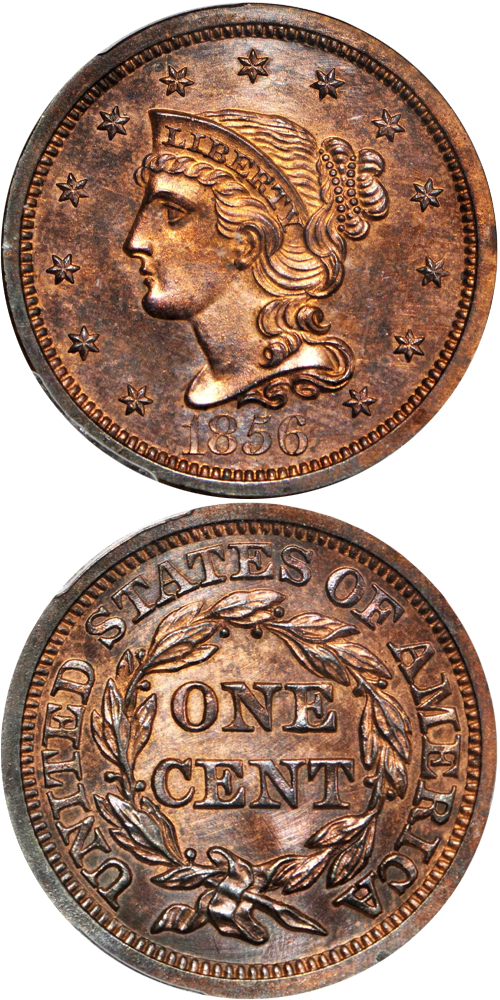1856 Braided Hair Cent
Slanting 5
With more than 100 examples known (per PCGS CoinFacts), the 1856 is the most available Proof Braided Hair cent. As with all pre-Civil War era U.S. Mint Proof coins, however, this issue is scarce in an absolute sense, and it is rare from a market availability standpoint given the strong demand among specialists. A single die marriage is known for the Proofs of this date, Newcomb-5, the obverse of which features evidence of light die rust on Liberty's portrait. The reverse die was also used to strike Proof 1857 Braided Hair cents of the N-3 variety. These attributes have led to speculation on the striking sequence of the Proof 1856 issue. Bob Grellman included this note about the 1856 N-5 in his reference, The Die Varieties of United States Large Cents 1840-1857 (2001): "Regardless of exactly when this variety was struck (my guess is soon after large cent production ceased in 1857), it is one of the most attractive proofs in the series." The fine rust pits on Liberty's portrait certainly suggest that the obverse had been in storage for some time before being used in coinage. This is not unusual for the U.S. Mint of the mid-19th century, for it is well documented that in other denominations Proofs with earlier dates were struck circa 1858 and 1859, as in the case of the Liberty Seated silver dollars.
Walter Breen did not discuss this issue of striking sequence in his Proof coin encyclopedia (1989), nor did he attempt to list many specimens of this particular variety since appearances were relatively plentiful as Proof large cents go. However, he did comment on their general popularity "because of [their] comparatively early date, because many collectors want a large cent proof of no matter what date, because it is a good showpiece as such, because many examples come with a beautiful warm rosy or even tangerine brilliance possessing much eye appeal."
The example to the left was sold by Stack's Bowers Galleries in the March 2018 Baltimore Auction, where it realized $8,700.






